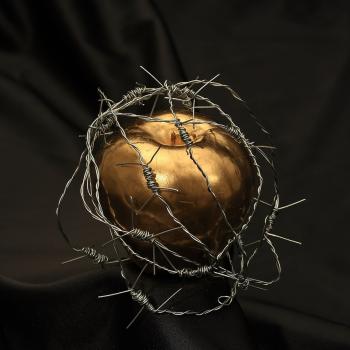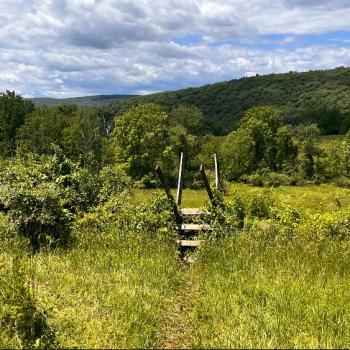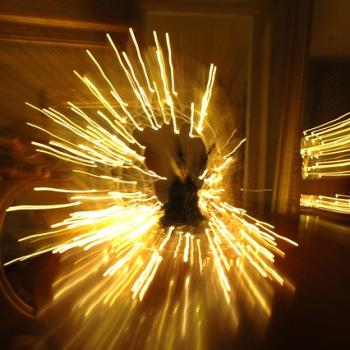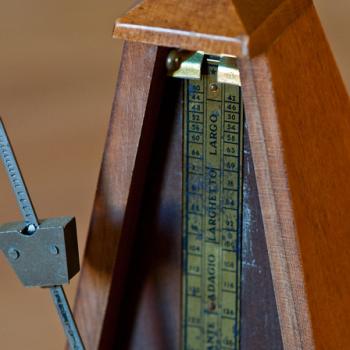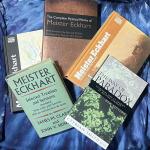
Stories We Choose to Believe
We decide who we want to become by stepping into the stories we choose to believe.
Most of us see ourselves as the protagonist of our own stories. We are the beautiful princess or the handsome prince, with the courage or wisdom or persistence which saves the day. The stories we tell ourselves as children at play shape our expectations and perceptions of the lives we lead.
We paint our faces and dress ourselves in the clothes of our stories. When we look in the mirror we see the reflections of our stories.
Many of our stories enter our lives as fairytales or animated movies. We listen and watch, transfixed by the images of the stories as they roll toward resolution.
For many of us, we find stories which are resolved in joy and justice most attractive. We learn to yearn for our happily ever after endings.
Our stories are often struggles between good and evil. We choose a side on which to stand, a side we will support. Some of us cheer for Truth and Justice, while others tend to appreciate the wit and flair we find on the Dark Side.
We may remember our stories from childhood, from play or fairytales or entertainment. Our stories might come to us from literature or history or film noir. Some of the stories we choose to believe we originally heard from our families. We are shaped by the stories of our parents and their parents.
Some of us struggle to remove ourselves from our stories, while others work hard to live up to their stories.
How have the stories we tell ourselves shaped us and our approaches to life? If you could choose the stories you tell yourself, what changes would you make?
Stepping Into Our Own Stories
The stories we tell ourselves shape our expectations and attitudes even when we may not realize we are listening to them.
Recognizing there might be more to life than the stories we tell ourselves is a significant part of growing up. We begin to appreciate the value of our own experiences compared to the expectations which have been placed upon us.
Some of us develop a sense of our inner values early in life. We find ways to avoid or remove what other people try to impose on us. Some of us could find a balance which worked for us at a young age and have maintained that relative balance over time.
Others of us came to a realization of the power stories had over us after some time. We may not have enjoyed the expectations we worked to exceed, but assumed they were part of everyday life.
The challenge for each of us is looking into the stories we tell ourselves and listening to what they have to tell us.
Most of the stories we have been told were not intended to confuse us or to imprison us in their words. We may be able to look at them more clearly now than we could when we first heard them.
It helps to pause, take time, and listen to the stories before we decide how to step into them.
We sit still, close our eyes, breathe deeply, and hear the words of the stories deep within us. As we listen we hear the words of the story, spoken by the person who first told it into our lives. We also hear the spaces between the words, the sacred stillness which gives our stories meaning and significance.
Can we hear what we have missed before, what we have forgotten?
Stillness in the Stories We Choose to Believe
As much as we might struggle with them, the stories we tell ourselves are not our enemies.
We may be accustomed to hearing them as attempts to control us or tell us what to do. As we sit still and listen we can begin to hear the stillness, the patience in the stories. The stories we tell ourselves are not confining, even if they were originally intended to be. Our stories call to the potential within us.
There is power in our stories, which is why we remember them. We see ourselves in the characters and the drama of the stories. As we listen to the sacred stillness in the stories we begin to recognize ourselves in new ways.
Listening in stillness, allowing the stories to run through our heads, reveals new depths within them. Slowly we begin to understand what our stories have to tell us.
When we listen to the stories we tell ourselves, the stories others tell us, or sacred stillness, we experience them anew. Each time we open ourselves to a story it opens itself to us in a fresh way.
Listening to the Stories We Tell Ourselves
Each day we look in the mirror and see how we have painted our faces and dressed up to match our stories. Listening to the sacred stillness in our stories allows us to recognize our true selves in the stories we tell.
The stories we tell ourselves, which someone else originally told us, are not intended to tell us how we have to be. As we listen, the stories reveal more than expectations and rules to follow.
Listening to our stories allows us to take a first step into them, then a second.
The stories are not supposed to confine us or take away our choices. Our stories open our imagination and show us our potential. We can be princes and princesses with the courage and wisdom and persistence which saves the day.
The stories we tell ourselves open doors which allow us to step into them.
We listen to the words of the stories and to the sacred stillness between them. Slowly the meaning of each story reveals itself to us.
How will we step into the stories we choose to believe in a fresh way today?
When will we take time to listen to the stories we choose to believe this week?
[Image by Alyssa L. Miller]
Greg Richardson is a spiritual director in Southern California. He is a recovering assistant district attorney and associate university professor and is a lay Oblate with New Camaldoli Hermitage near Big Sur, California. Greg’s website is http://StrategicMonk.com and his email address is StrategicMonk@gmail.com.




